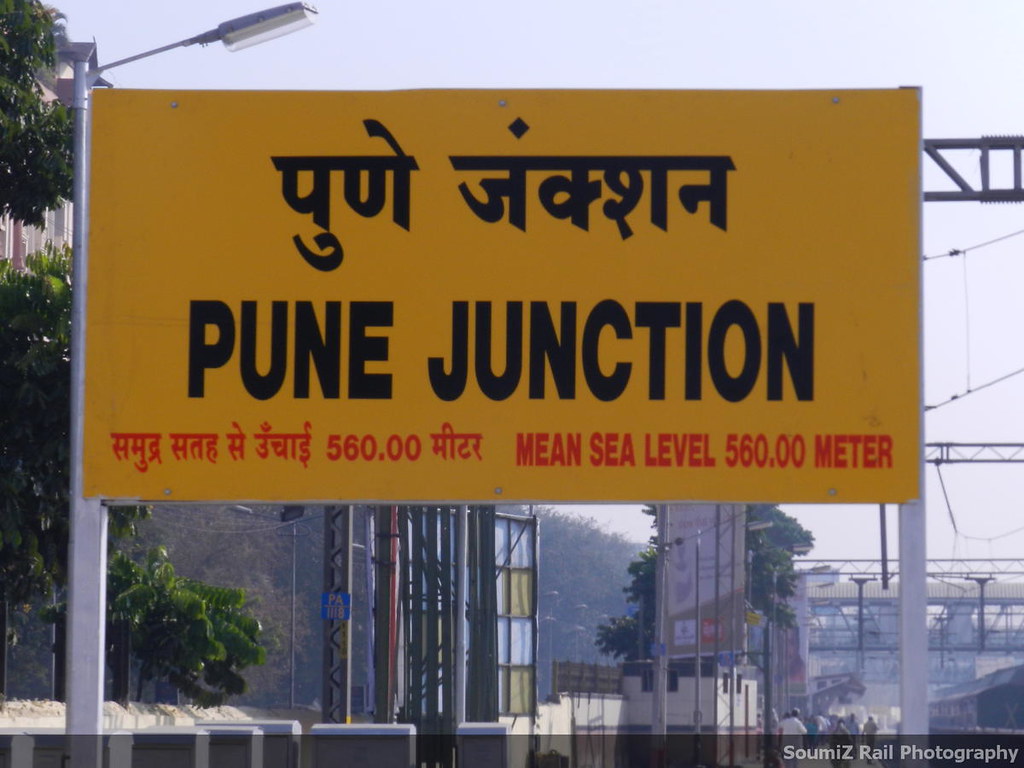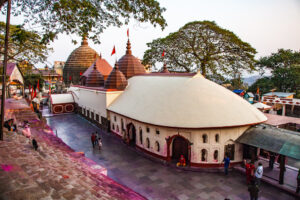
In the State of Maharashtra, Pune is the second largest city. It is the most livable city in India and is the most frequented tourist destination for all. It is a blend of modern updates and rich history and it never fails to keep its tourists entertained. Nature has also been kind to the land as is evident from the picturesque landscapes here. To relax or to be entertained, Pune is just where you need to be. Here are the top 10 places to visit in Pune.
The below are the top 10 places to visit :
Raja Dinkar Kelkar Museum
You must Visit the Raja Dinkar Kelkar Museum which has an overwhelming number of collections of artworks from various parts of India. Established in 1962 it reflects the spirit of Dr. D.G. Kelkar who dedicated the museum in the memory of his only son, who had died tragically at the age of seven. It represents various cultures and traditions, generations, events, races in the country. It represents the 21,000 plus collections which mirror Arms & Armours, Betel nut crackers, String puppets of Odisha, Shadow puppets of Karnataka, Wooden Sculpture of Shiv Tandav. It took him 40 years for the assimilation of the items displayed in the museum. In the year 1960, for the display he had around 15,000 artefacts. The museum has an impressive collection of wooden objects, paintings on the scenes from mythological epic Ramayana, nutcrackers, ivory items, paintings, textiles, vessels made up of terracotta, copper and brass, excellent pottery collection, sculptures, writing materials, carved palace doors, coins, musical instruments, Mughal lamps, arms and other various collections. The collection gives you a glimpse into the past. Presently, it is under the control of the Department of Archaeology, Government of Maharashtra. Recently only 25,000 of the items are on display for the public. The museum has statues of Lord Ganesha, Goddess Parvati, Lord Shiva. The most attractive feature of this museum is the miniature of the Mastani Mahal originally built in the year 1734.The miniature has a luxurious decor, grand chandeliers and artistic paintings present in such a way that it looks similar to that of the palace. It is located on Bajirao Road, Shukrawar Peth. It has a minimum entrance fee that is Rupees 10 per person for Children below 12 years, Rs 50 per person for Adults above 12 yrs, Rs 50 per person for Foreigners (Children) and Rs 200 per person for Foreigners (Adults). It is open from Monday to Sunday from 10:00 am in the morning to 5:30 pm in the evening.
Aga Khan Palace
Sultan Mohammad Shah Aga Khan had built the Aga Khan Palace in the year 1892. It was constructed with a view to help famine affected people in Maharashtra who suffered the worst effects of famine. The palace is spread across an area of 1756 square.meters. It took five years to complete this palace construction. It is a fine specimen of architectural excellence with lush greenery around. Aga Khan Palace, though, had other purposes to serve but it functioned as a prison to Mahatma Gandhi, Kasturba Gandhi and Mahadev Bhai Desai, secretary of Gandhi between August 1942 and May 1944. It is known for its memorials of
Gandhi’s secretary, Mahatma Gandhi and Kasturba Gandhi, who was the wife of Mahatma Gandhi. Kasturba Gandhi and Gandhi’s secretary both of them had breathed their last in the premises of this palace. The memorials of these two have been built inside the palace grounds to honor them. As a mark of respect to Mahatma Gandhi, Aga Khan the Fourth donated this palace to the people of the country. Charles Correa, the famous architect had designed the memorials of Kasturba Gandhi and Gandhi’s secretary. The palace has beautiful spacious lawns. It has five halls and its Italian arches leave you awestruck. It has two floors, the first floor is about 1080 square. meters while the second floor is 445 square. meters. The corridor of 2.5 meters is spread around the entire building. The palace is under the Gandhi Memorial Society. It takes care of the museums and memorials and organizes various exhibitions at the palace. These exhibitions are organized on the various aspects of Mahatma Gandhi’s life which provides a deeper knowledge into the life of our father of the nation. It is located on the Nagar Road, at a distance of 2 km from the Bund garden. It has minimum entrance fees that are 5 per person for Indians, 2 per person for Children and 100 per person for Foreigners. It is open from Monday to Sunday from 9:00 am in the morning to 5:30 pm in the evening.
Western Ghats
Western Ghats start at the borders of Gujarat and Maharashtra and end at Kanyakumari. It was added to the world heritage list by the United Nations Educational, Scientific and Cultural Organisation (UNESCO). During monsoons, the hill stations in and around Pune on the Western Ghats provide amazing gateways. The lush green look of the ghats give a beautiful pleasant view that the tourists would simply love. There are many places and forts to explore for trekking enthusiasts. It has dense forest, a wide range of flowers, misty mountains, breathtaking valleys, and everything the tourists or nature lovers wish to view. It is ideal for a weekend getaway or a one day picnic spot, from your busy routine schedule. During monsoons you will find amazing waterfalls as you travel through the ghats. The best way to explore these places is driving through the motorways. There are small streams, lakes, wall falls which the tourists enjoy alot around Pune on the Western Ghat. There is an excellent scope for trekking, rock climbing and hiking for the trekkers and adventurers. It is advisable and wiser to carry some food stuffs because these places might not have an exact place where you get food of your choice as this place is situated in the remote areas. There are small roadside hotels which are perfect for tea breaks and enjoying some different varieties of hot pakoras, sweet corns and different varieties of maggie. The remote winding roads serve a fantastic view.
Shivneri Fort
It is the birthplace of great Maratha emperor Chhatrapati Shivaji Maharaj. He received his early training in this fort which prepared him for the future and made him the undisputed king of the Maratha dynasty. Shivaji was named after the goddess Shivai Devi whose small temple is dedicated in Shivneri Fort. If tourists want to travel there they will have to climb a hill which is 300 meters tall. Tourists have to cross 7 gates to reach the fort which features how exceptionally the fort was guarded. There are 400 steps to reach the Shivneri Fort. It is famous for its beautiful design and architecture of the fort. You will find a small water pond named Badami Talav which is located in the center of the fort. Besides the pond there is an idol of Shivaji along with his mother Jijabai. Once the tourists reach here, nearby there are other forts in Shivneri hill which includes Chavand Jivdhan, Jumnar and Bhairavgad. Tourists can easily explore other places in and around the fort like Kadelot point, Ganga Jamuna, NaneGhat, Ambarkhana and Shiv Janmasthan. Travellers who come here also explore Kadeloot Tok, Dongarmatha and Kaman Take which are located within the fort. From Pune Junction it is at a distance of 94 km and it takes around 2 and a half hours to reach there. You can get state buses or taxis to reach this place from Pune to Junnar. From the bus station, tourists will have to walk 2 km to reach the base of the fort. But the best way to reach is the motorway. You need to carry your own food stuff and enough water. Though some meals and tea stalls are available nearby in the base of the fort, it’s better to hold your meal. For the trekkers who love history it is a double delight. The timings are from 6 am in the morning to 6 pm in the evening.
Sinhagad Fort
Sinhagad Fort is known for its historical importance and architectural brilliance. The name means Lion’s fort. It is among the Sahyadri Mountains. Another name for it is Kondhana Fort. It has witnessed several battles including the 1670 Battle of Sinhagad. It provides a better environment for an outing and is shrouded with greenery. Tourists come here for trekking but it has other things to do and see also. There are military stables, statues of Lord Hanuman and a temple of Goddess Kali. The fort is believed to be 2000 years old. On top of Sahyadri mountains, the fort is on a plateau with steep slopes. The slopes provided a natural defence against intruders. In today’s time you can see only the main ramparts of the fort and the ancient stone stairways which lead to the 2 enormous entrance gates. Sinhagad Fort undertakes the most popular adventurous trekking activities. The trekking route starts from old Katraj’s tunnel top and the route has got plenty of beautiful views of hills, mountain ranges and forests. The trekking distance is 16 km and it takes about 4 to 6 hours to reach the fort. The Pune Darwaza and the Kalyan Darwaza are the two gates. The stone stairways lead you to the top of the fort. It takes 1 to 2 hours to climb the fort whichever route you take. There are many things to see at the Sinhagad Fort like the Grand Entrance Gates, Tanaji Kada, Khandala Machi, Kalavanteen Buruj, Zunjar Buruj, Daru Kothar, Kade Lot, Wind Point, Tanaji Malusare’s Memorial, Udaybhan Rathod’s Memorial, Chhatrapati Rajaram’s Tomb, Sinhagad Fort Temples, Dev Taake, Horse stables, Top Khana, Lokmanya Tilak’s bungalow. Other things to do at Sinhagad Fort are Camping in which you can see the best views and can get to witness the morning sun. You can also do bird watching at the streams. Crested tree-swifts, Serpent Eagle, Sunbirds and several other species of birds come here to drink water. Tourists enjoy the tasty local food. You will get Tak, Lassi and Lemonades for quenching your thirst. There are food stalls serving a variety of traditional dishes like Bhakari and Zunka or Pitala, Chicken and mutton curries, thecha, vangyache bharit etc. they also have a variety of maggie and pakoras or fritters. The entry fee is ₹ 5 or ₹ 10 per person. It is open from Monday to Sunday from 6:00 am in the morning to 6pm in the evening. You can visit it either by bus or booked cab but the best way is taking a motor ride.
Parvati Hill Temple
Parvati Hill is a famous landmark in the city of Pune and is a home to ancient temples back in the 17th century. It has the oldest structures of the city and it has the ancient Devdeveshwar Temple which is over 250 years old. It has four temples which are dedicated to Lord Shiva, Lord Vishnu, Lord Ganesh and Lord Kartikeya. It is 2100 feet above sea level and it is one of the scenic locations of the city. It is situated at the hillock at the southern end of Pune. There are 103 steps which lead the tourists to the top of the hill. The hill from the top offers a gorgeous and spectacular wide view of the entire Pune and the surrounding valley. Kashibai, mother of Nanasaheb Peshwa was ill and visited this place because this place was known for its magical healing powers. Kashibai pledged to build a temple after her recovery. So when Kashibai started feeling better his son Nanasaheb Peshwa builded the main temple in the 1740s. There are many things to do at the Parvati hill temple such as paying respect to the temples.It was believed that Parvati Hill was the sole worship place for the Peshwa rulers. Many tourists come here to take blessings from the four lords and other deities in this temple complex. You can also pay a visit to the museum. The museum is near to the main temple and it displays several items which belonged to the Peshwa rulers. It has things like swords, guns, coins, wooden artifacts, ancient manuscripts and portraits and paintings from that era are also seen in the museum. You can have early morning jogs and trekking to the top of the hill. When the crowd is less you can freely explore other spots like Sati Monument and Vetal Chabutra on the hill. It is open throughout the year and so you can visit it at any time during the day to get some peace and fresh air. The entry is free over here. The best time to visit is the months between August and February. Tourists can just walk up the steps in the evening and sit there admiring the city from above. You can either travel through a bus or an auto-rickshaw or a cab/taxi. It is open from Monday to Sunday from 5:00 am in the morning to 8:00 pm at night.
Empress Garden
The Empress Garden is a reminder of the British and their power because they named the garden after Queen Victoria who was given the title ‘Empress of India’. The monuments and other ancient construction reminds you of the mighty ancestors that belong to this part of the world and also the downfall of the mighty and the supremacy of the victor who came from other places to conquer, fight and rule. The Empress Garden is now set in a sprawling 39 acre of land with hundreds of rare species in trees and flowers. The tourists visit this place as the landscape is stunningly beautiful. The garden is Managed by the Agri-Horticultural Society with a view to preserve the region’s wide range of trees and flowers. To breathe in some fresh air away from the city traffic, one must come here as it is a great place to stroll in the afternoon and learn about the flora in the flower exhibition. It has alot of plants and flowers of rare origin and is also home to various varieties of species that are more than 100 years old. It is a botanical park where one finds different species of shrubs, trees, vines and blooming beauties. The botanical garden is the upkeep of the labour of love as they spend a good amount of time. The responsibility of the Empress Garden is in the hands of the Agri – Horticulture Society and it carries out all the functions and does the needful for the bounty. The Empress Garden is popular for its flower show Buds and Blooms. With flower beds everywhere, the garden looks amazing in the bloom season. The Annual flower shows conducted here attracts visitors from far off places. You will find creepers, small trees, lovely canopies and flowers in pots. It has more than 150 species out of which 125 are local and rare. There is also a collection of tropical trees and a small zoo. You can do yoga and play sports like cricket and football in the green lawns. There is a library, arrangements for indoor games and a play area for kids. It’s popular for pre-wedding shoots. The garden grows mangoes, tamarind and fresh flowers. It is located near Race Course, Kavade Mall, Camp, Pune. The entry fee is ₹ 15 per person for Adults, ₹ 10 for 2 wheeler, ₹ 20 for car and ₹ 50 for bus parking. It is open from Monday to Sunday from morning 9:30 am to evening 6:30 pm.
Shaniwar Wada
Shaniwar wada is the finest example of architecture in the city and is a 286 year old mansion. The Shaniwar wada was built by the Peshwa Bajirao I himself as the residence of the Peshwas. Earlier it covered almost the entire area of the city itself but today It covers an area of 625 acres only. It offers various forts and fountains. There is a majestic statue of Baji Rao I which is situated at the entrance of the palace. It is the only standing testimonies to the grandeur, valuer, and the just rule of the Peshwas. The Shaniwarwada is an orderly fashion all around this historic structure and covers the entire old part of the city of Pune. Laxmi Road, Tulshibaug, Ravivar Peth etc. are the oldest markets of Pune which are around Shaniwar Wada. Tourists will get a glimpse of the history and some dramas as well. The Shaniwar Wada was built by Bajirao I in the 18th century and Bajirao served as the Peshwa or the Prime Minister to the Maratha ruler- Chhatrapati Sahu and it is famous for the romance between Peshwa Bajirao and Mastani Sahiba. In the 18th century the Shaniwar Wada was built by Bajirao I. It was built in the year 1730 in January and it was named after the Marathi words Shaniwar (Saturday) and Wada (residential complex). It consists of fortification walls with gates and bastions. Reservoirs, fountains and court halls were also added. The scenes from the Mahabharata and the Ramayana were painted on the walls of the palace. Another significant site is the Ganpati Rang Mahal. Shaniwarwada has five getaways that are the Mastani gate, the Ganpati gate, the Narayan gate, the Khidki Darwaza and the Dilli gate. It has a sixteen petal lotus-shaped fountain stands indicative of the exquisite work of that time. To educate and inform the tourist about the rich history of those times, a Light and Sound show has been set up at the Shaniwar Wada at a total cost of INR 1.25 crores. The show is held from Monday to Sunday in the evenings and the timings of the show are as follows: Marathi Show is from 7:15 PM to 8:10 PM and English Show is from 8:15 PM to 9:10 PM. The price of the ticket is ₹ 25 per head and can be purchased every day between 6:30 PM and 8:30 PM.
Saras Baug
Initially Saras Baug was a lake at the foothill of Parvati but as the water of the lake started drying up the exposed land was converted into a park. This park was then named as Saras Baug. It has a temple in the centre and it expands over an area of 25 acres. It is called Talyatla Ganpati as it was built in the middle of a lake and it is dedicated to Lord Ganesh.
The temple has an important venue for several historical events in particular. It has lush green lawns which are often well maintained and trimmed. It has well paved pathways through which you can walk across the entire park. Tourists can hang around everywhere in the garden which is available for tourists as long as they keep the surroundings clean. It has a very relaxed sort of atmosphere that draws locals in large numbers. It has a small museum which is dedicated to Lord Ganesha. It had a zoo called Peshwe Park which is now relocated near Swargate, Sarasbaug Road, Sadashiv Peth, Pune-411030. It was built in the 20th century in the middle of a lake that once existed in Pune.
For rejuvenation it is a great place. While exploring the lawns, the tourists can take a long ease walk all through the park. It has concrete blocks that provide seating and a well maintained and trimmed line of pathways. Here tourists can sit and walk over the lawns too. For families who want to get their kids out over a weekend, it is a perfect picnic spot. The Ganesh Temple also draws several believers here. To absorb the divine energies tourists can sit in the temple premises and offer their prayers. The temple has an artificial lake and a pathway encircling the lake. While walking across the pathway they can observe the fishes in the waterbody. There is a water fountain which is started in the evening sometimes. The waterbody then transforms the scenic beauty of the attraction. One can get some delicious street food outside the Baug as there is a chowpatty. This chowpatty has small eateries and lots of tables to accommodate a large number of foodies. There is a variety of foods and beverages available at the chowpatty. You can find Maharashtrian, North-Indian, South-Indian, Continental, Chinese and Fusion dishes to suit your taste. It is located in Saras Baug Road, Municipal Colony, Pune. You do not have to pay any entrance fee. It is open from Monday to Sunday from morning 9:00 am to evening 6:00 pm.
Pune Okayama Friendship Garden
Japanese Garden is one of its kind in Pune. The Pune Okayama Friendship Garden is the largest Japanese garden in Asia. Another name for it is the Pu. La. Deshpande Udyan and it was named after Marathi writer and humorist, Pu La Deshpande. He also received the Padma Bhushan in 1990. It is inspired by the 300-year old Okayama Korakuen Garden in Japan and it reflects the Indo-Japanese relationship. The garden is spread across 10 acres and includes a changing landscape throughout the paths. The park offers the perfect mix between nature and concrete, having man-made ponds and waterfalls and a natural canal passing through the garden. It has lush green grass plants, beautiful flowers and the artificial hills and Pergolas to sit on lawns. Visitors come here to explore the wide variety of flora and take a stroll after a stressful day. Visitors can plan a trip to this garden also. The garden shows the Japanese Yin and Yang theory which emphasizes motion and stillness, warmth and cold, light and darkness and represents authentic Japanese culture. You will find a variety of plants ranging from Pines, Plums, Willows to Japanese Camellias and Tsubaki and Sazanka. The garden is predominantly green in colour with the use of evergreen shrubs and trees signifying eternity. You will find numerous birds, colourful Koi Fishes in the pond, ducks, waterfalls, Japanese bridges, stone lanterns, water basins, walls, statues and fences. It signifies the friendly relationship between not only the two cities (Okayama and Pune) but also between the two countries. It was established in order to give India an insight of Japanese culture and tradition of gardens in order to create peace and harmony. It has focused on making the gardens a spiritual space for people to meditate and reflect. The garden is based on the design principles of “Balance”, “Emptiness” and “Nature”. It is famous for its evening fountain dance. It is located on Sinhagad Road in Dattawadi.



